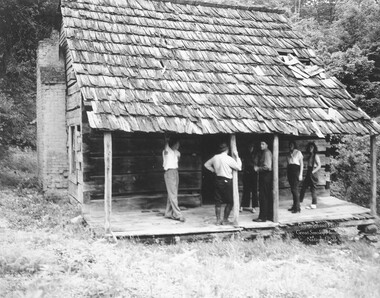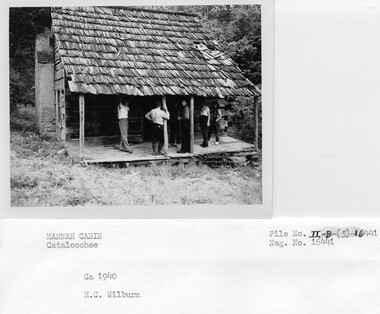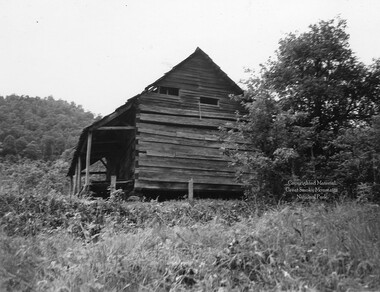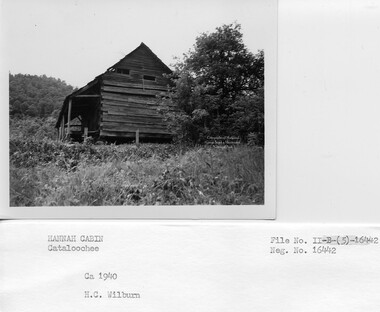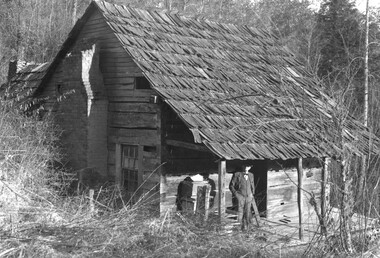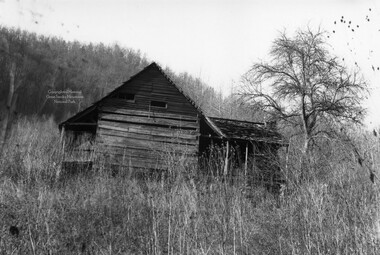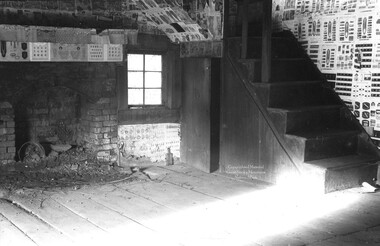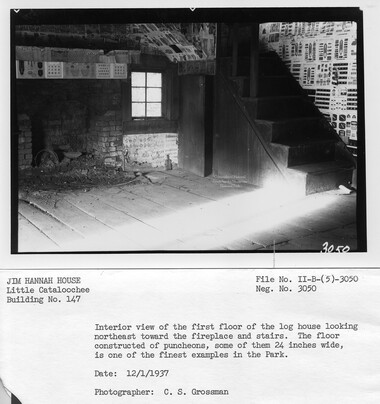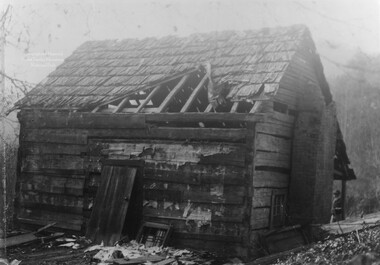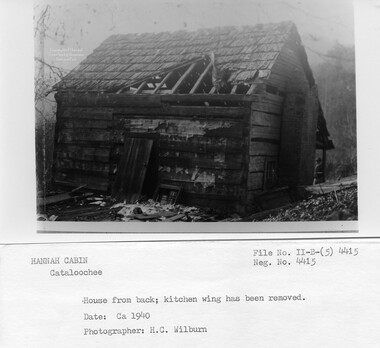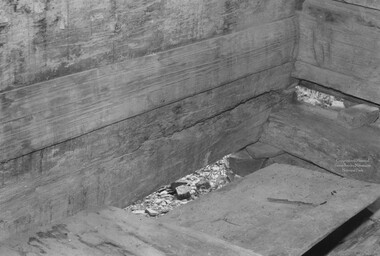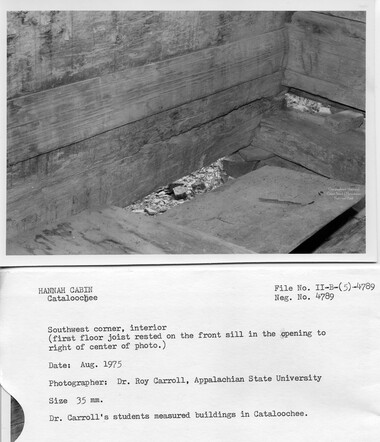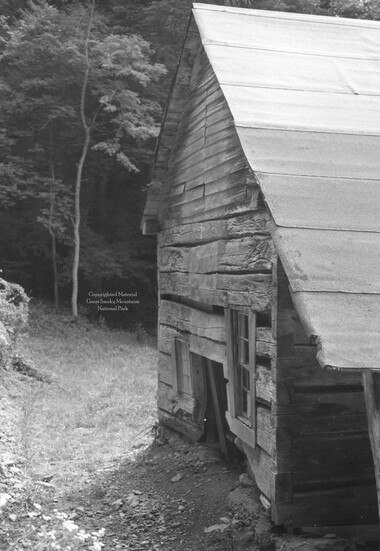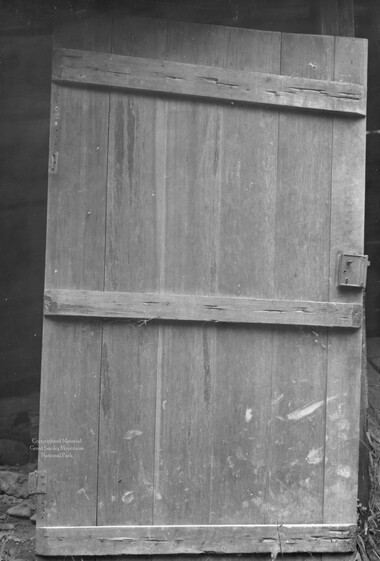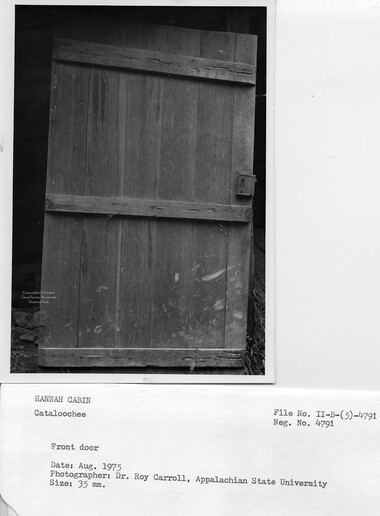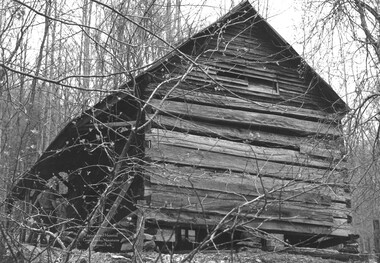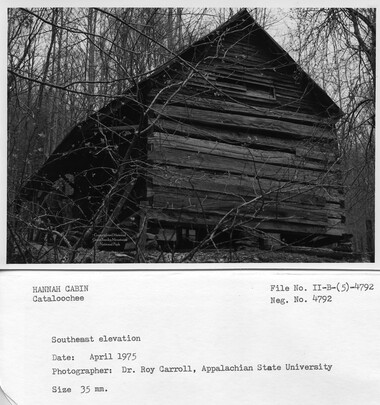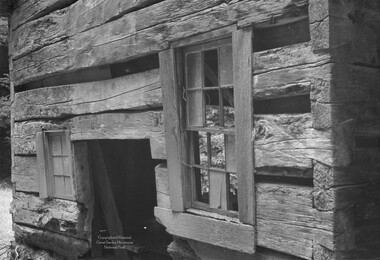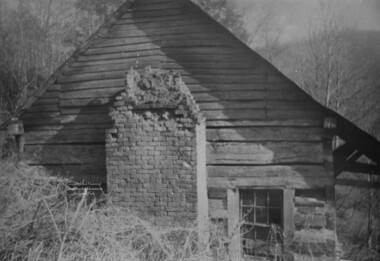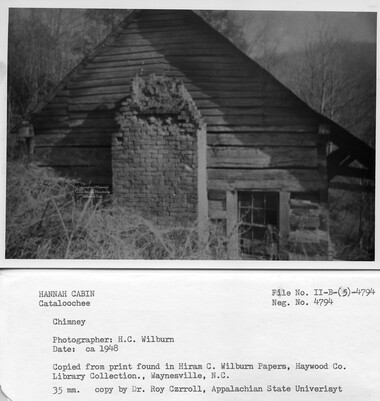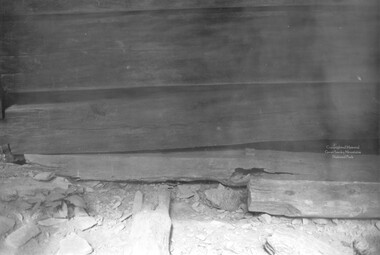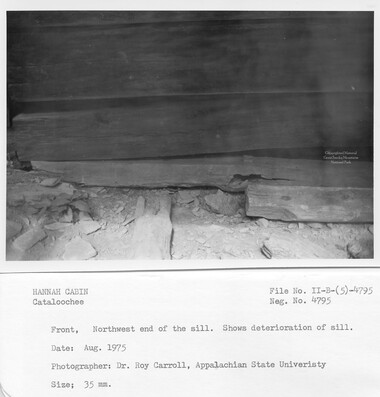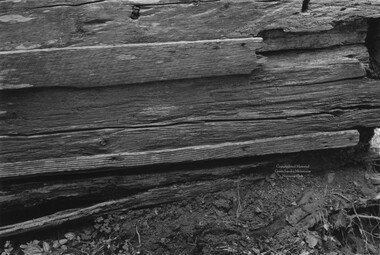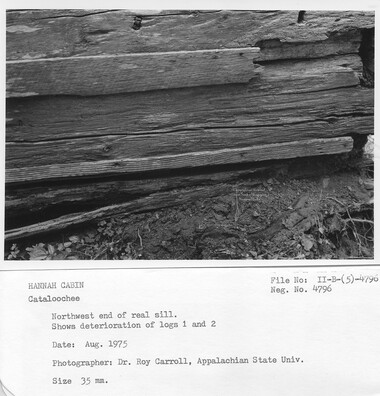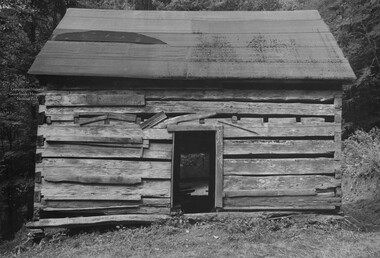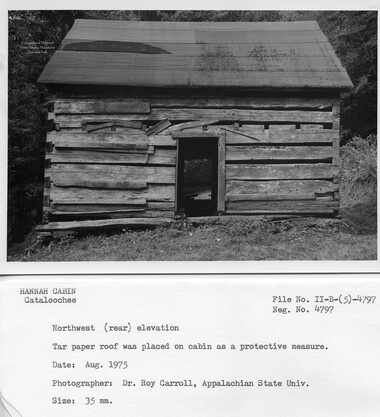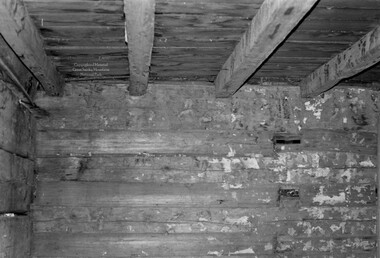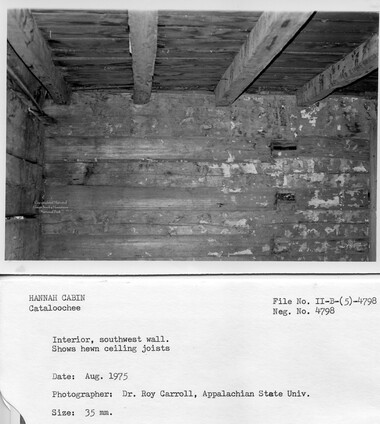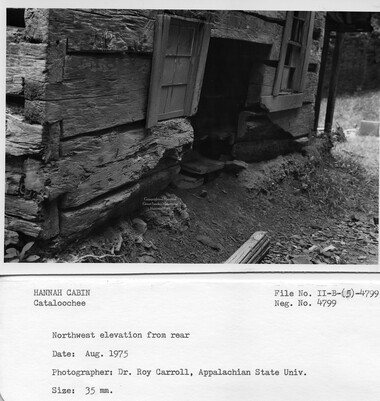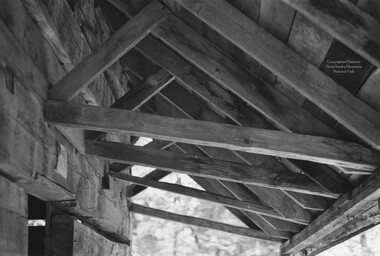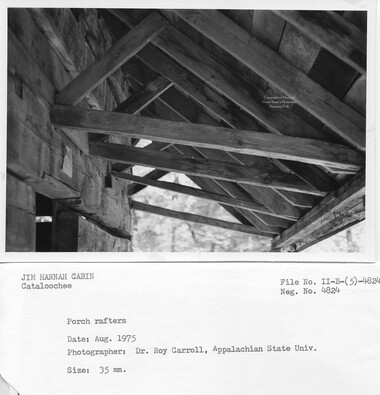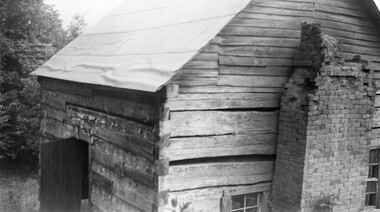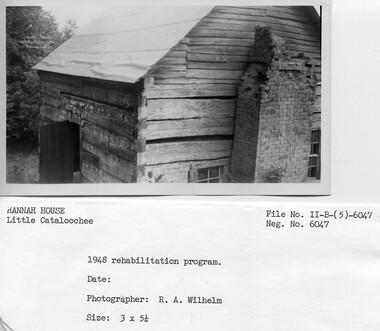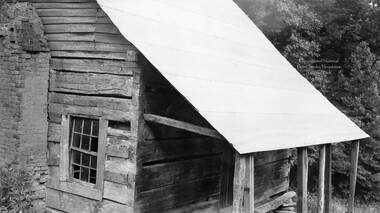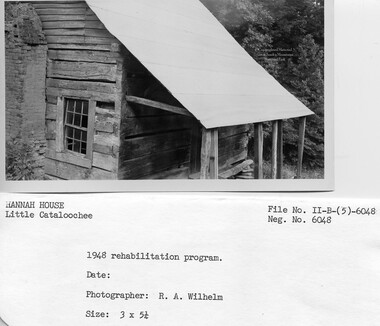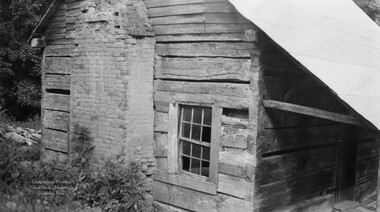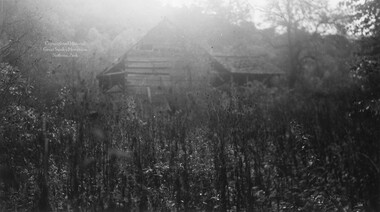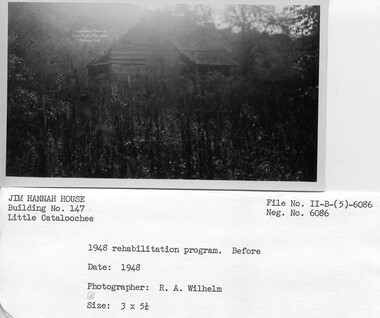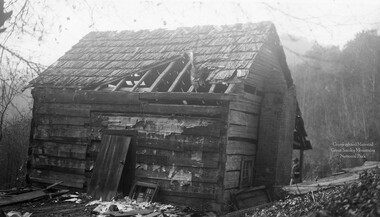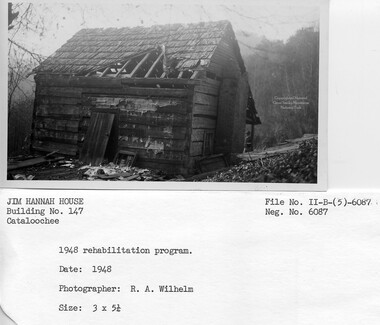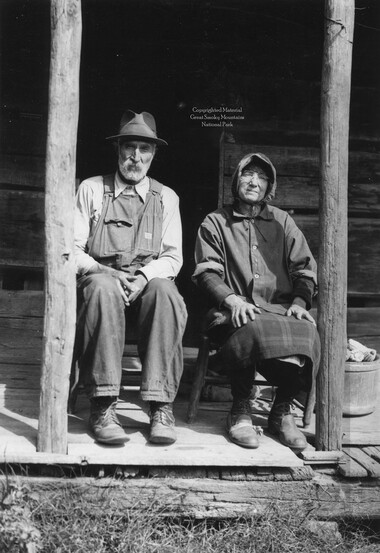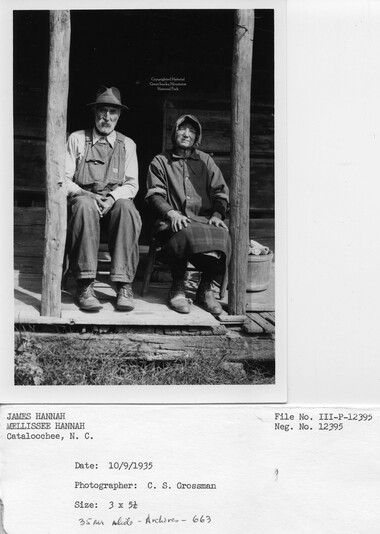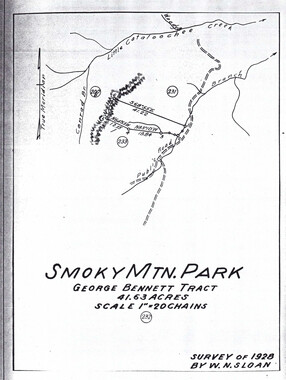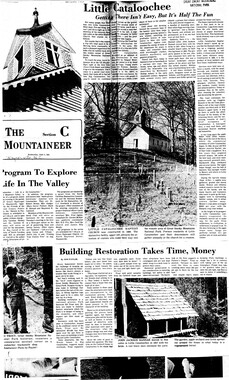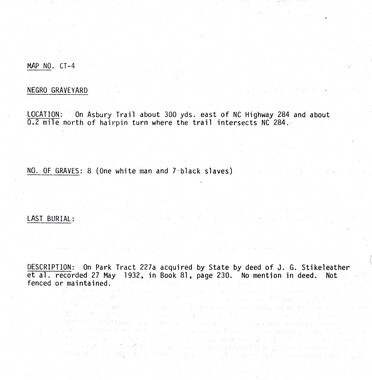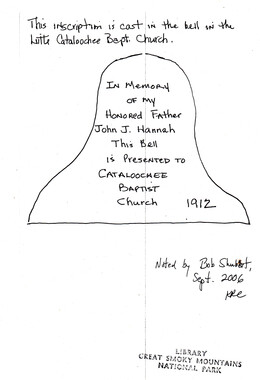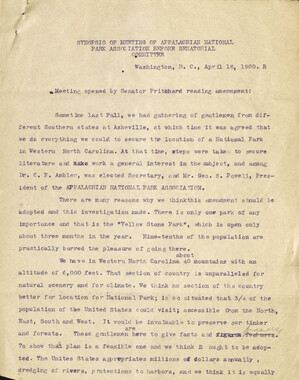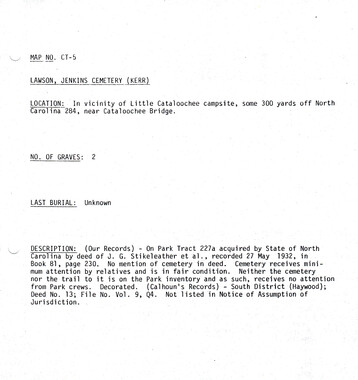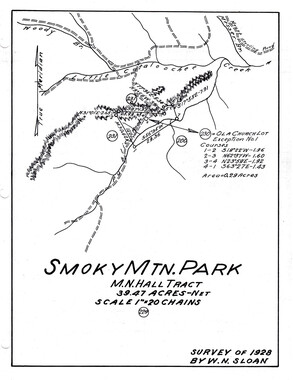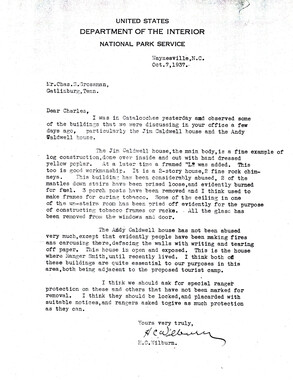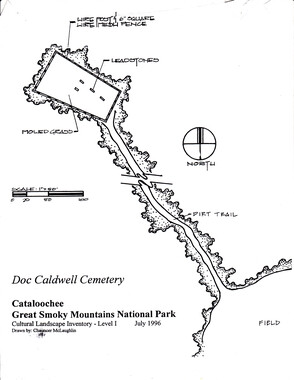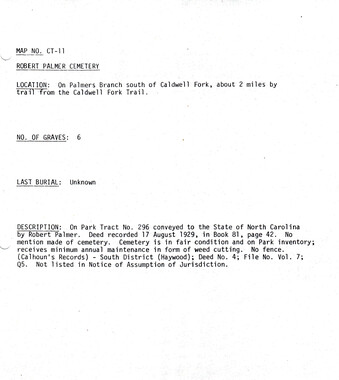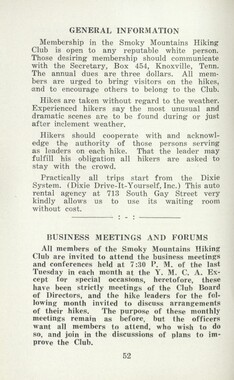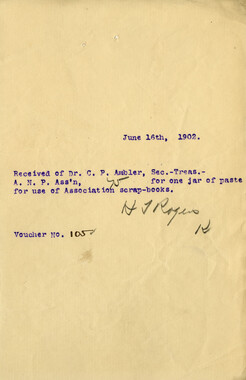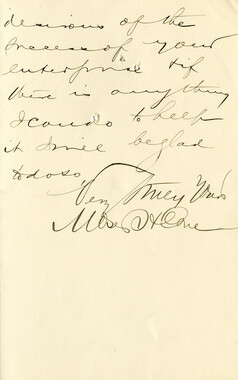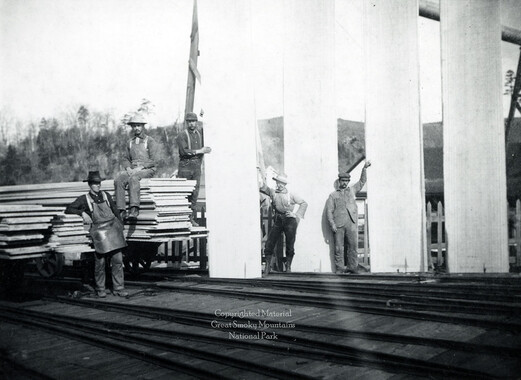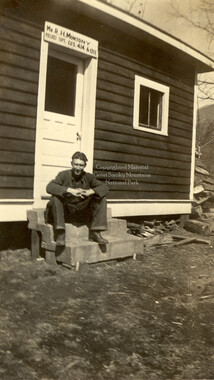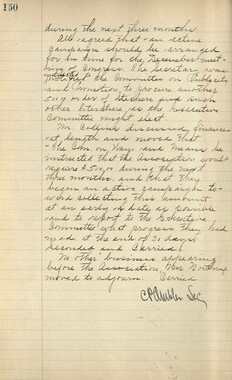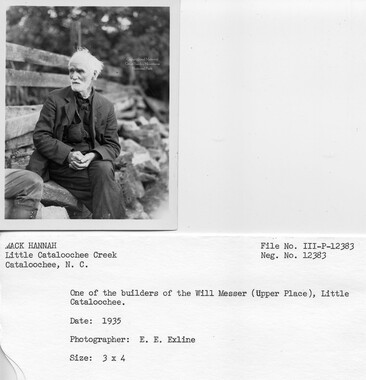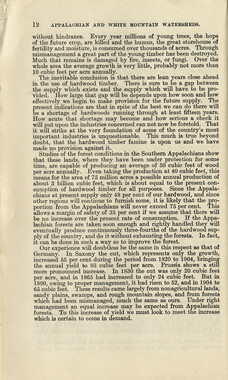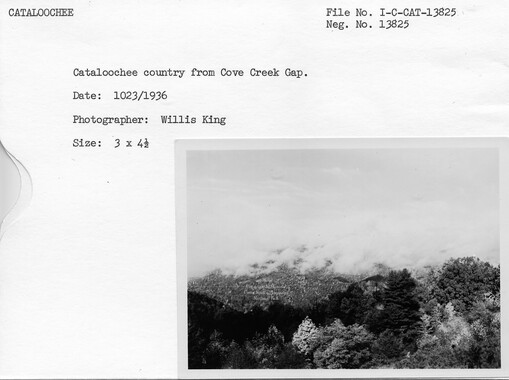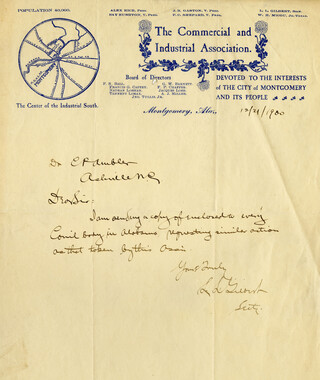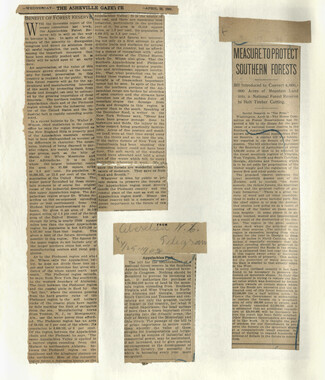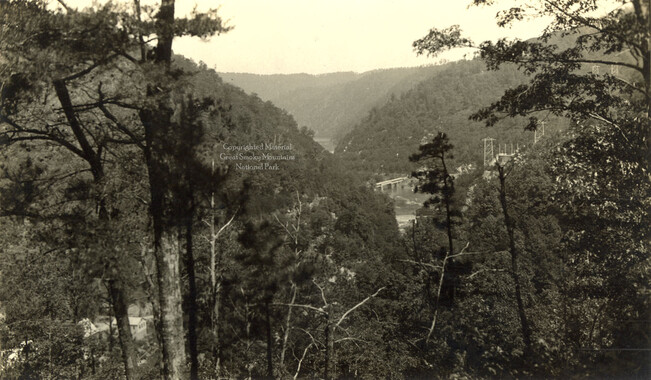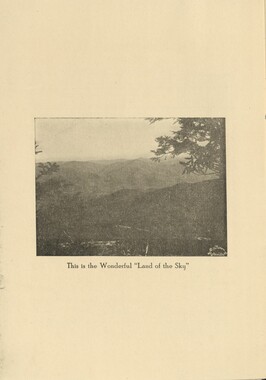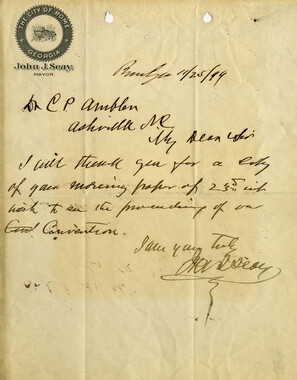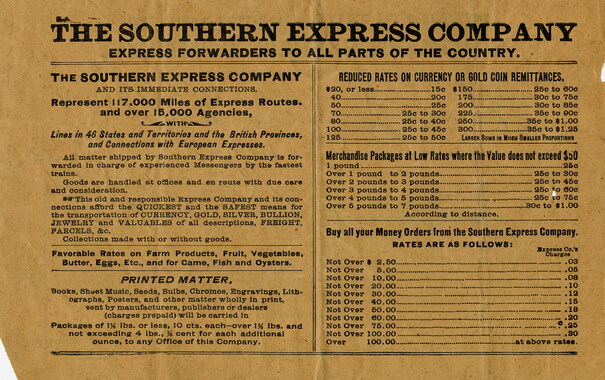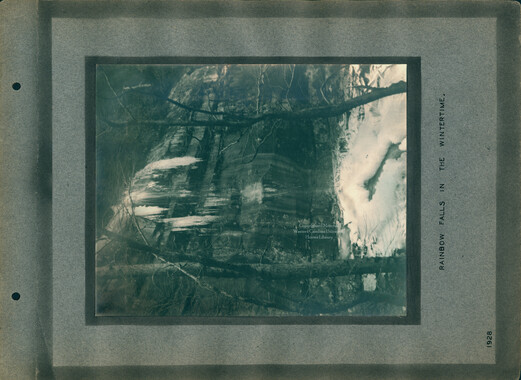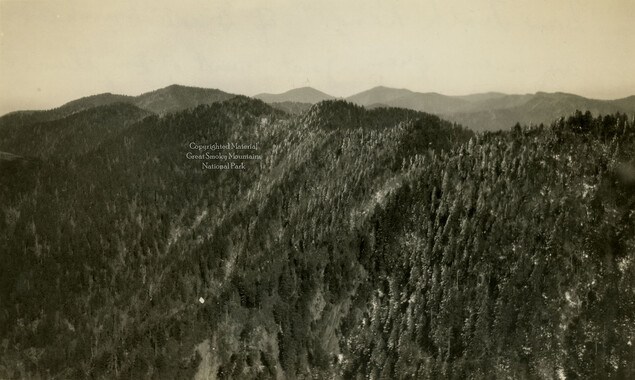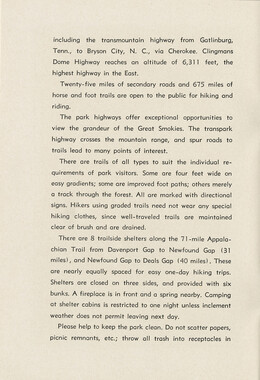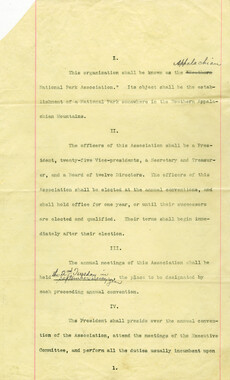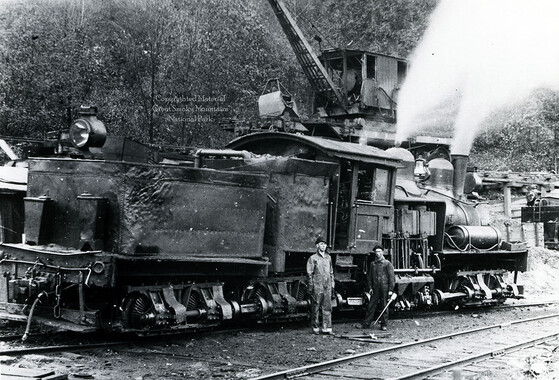Western Carolina University (20)
View all
- Canton Champion Fibre Company (2308)
- Cherokee Traditions (293)
- Civil War in Southern Appalachia (165)
- Craft Revival (1942)
- Great Smoky Mountains - A Park for America (2683)
- Highlights from Western Carolina University (430)
- Horace Kephart (941)
- Journeys Through Jackson (154)
- LGBTQIA+ Archive of Jackson County (15)
- Oral Histories of Western North Carolina (314)
- Picturing Appalachia (6679)
- Stories of Mountain Folk (413)
- Travel Western North Carolina (160)
- Western Carolina University Fine Art Museum Vitreograph Collection (129)
- Western Carolina University Herbarium (92)
- Western Carolina University: Making Memories (708)
- Western Carolina University Publications (2283)
- Western Carolina University Restricted Electronic Theses and Dissertations (146)
- Western North Carolina Regional Maps (71)
- World War II in Southern Appalachia (131)
University of North Carolina Asheville (6)
View all
- Allanstand Cottage Industries (62)
- Appalachian National Park Association (53)
- Bennett, Kelly, 1890-1974 (1295)
- Berry, Walter (76)
- Brasstown Carvers (40)
- Carver, George Washington, 1864?-1943 (26)
- Cathey, Joseph, 1803-1874 (1)
- Champion Fibre Company (233)
- Champion Paper and Fibre Company (297)
- Cherokee Indian Fair Association (16)
- Cherokee Language Program (22)
- Crowe, Amanda (40)
- Edmonston, Thomas Benton, 1842-1907 (7)
- Ensley, A. L. (Abraham Lincoln), 1865-1948 (275)
- Fromer, Irving Rhodes, 1913-1994 (70)
- George Butz (BFS 1907) (46)
- Goodrich, Frances Louisa (120)
- Grant, George Alexander, 1891-1964 (96)
- Heard, Marian Gladys (60)
- Kephart, Calvin, 1883-1969 (15)
- Kephart, Horace, 1862-1931 (313)
- Kephart, Laura, 1862-1954 (39)
- Laney, Gideon Thomas, 1889-1976 (439)
- Masa, George, 1881-1933 (61)
- McElhinney, William Julian, 1896-1953 (44)
- Niggli, Josephina, 1910-1983 (10)
- North Carolina Park Commission (105)
- Osborne, Kezia Stradley (9)
- Owens, Samuel Robert, 1918-1995 (11)
- Penland Weavers and Potters (36)
- Roberts, Vivienne (15)
- Roth, Albert, 1890-1974 (142)
- Schenck, Carl Alwin, 1868-1955 (1)
- Sherrill's Photography Studio (2565)
- Southern Highland Handicraft Guild (127)
- Southern Highlanders, Inc. (71)
- Stalcup, Jesse Bryson (46)
- Stearns, I. K. (213)
- Thompson, James Edward, 1880-1976 (226)
- United States. Indian Arts and Crafts Board (130)
- USFS (683)
- Vance, Zebulon Baird, 1830-1894 (1)
- Weaver, Zebulon, 1872-1948 (58)
- Western Carolina College (230)
- Western Carolina Teachers College (282)
- Western Carolina University (1794)
- Western Carolina University. Mountain Heritage Center (18)
- Whitman, Walt, 1819-1892 (10)
- Wilburn, Hiram Coleman, 1880-1967 (73)
- Williams, Isadora (3)
- Cain, Doreyl Ammons (0)
- Crittenden, Lorraine (0)
- Rhodes, Judy (0)
- Smith, Edward Clark (0)
- Appalachian Region, Southern (2393)
- Asheville (N.C.) (1886)
- Avery County (N.C.) (26)
- Blount County (Tenn.) (147)
- Buncombe County (N.C.) (1664)
- Cherokee County (N.C.) (283)
- Clay County (N.C.) (555)
- Graham County (N.C.) (233)
- Great Smoky Mountains National Park (N.C. and Tenn.) (478)
- Haywood County (N.C.) (3522)
- Henderson County (N.C.) (70)
- Jackson County (N.C.) (4692)
- Knox County (Tenn.) (21)
- Knoxville (Tenn.) (9)
- Lake Santeetlah (N.C.) (10)
- Macon County (N.C.) (420)
- Madison County (N.C.) (211)
- McDowell County (N.C.) (39)
- Mitchell County (N.C.) (132)
- Polk County (N.C.) (35)
- Qualla Boundary (981)
- Rutherford County (N.C.) (76)
- Swain County (N.C.) (2017)
- Transylvania County (N.C.) (247)
- Watauga County (N.C.) (12)
- Waynesville (N.C.) (68)
- Yancey County (N.C.) (72)
- Aerial Photographs (3)
- Aerial Views (60)
- Albums (books) (4)
- Articles (1)
- Artifacts (object Genre) (228)
- Biography (general Genre) (2)
- Cards (information Artifacts) (38)
- Clippings (information Artifacts) (191)
- Crafts (art Genres) (622)
- Depictions (visual Works) (21)
- Design Drawings (1)
- Drawings (visual Works) (184)
- Envelopes (73)
- Facsimiles (reproductions) (1)
- Fiction (general Genre) (4)
- Financial Records (12)
- Fliers (printed Matter) (67)
- Glass Plate Negatives (381)
- Guidebooks (2)
- Internegatives (10)
- Interviews (811)
- Land Surveys (102)
- Letters (correspondence) (1013)
- Manuscripts (documents) (619)
- Maps (documents) (159)
- Memorandums (25)
- Minutes (administrative Records) (59)
- Negatives (photographs) (5651)
- Newsletters (1285)
- Newspapers (2)
- Occupation Currency (1)
- Paintings (visual Works) (1)
- Pen And Ink Drawings (1)
- Periodicals (193)
- Personal Narratives (7)
- Photographs (12982)
- Plans (maps) (1)
- Poetry (5)
- Portraits (1654)
- Postcards (329)
- Programs (documents) (151)
- Publications (documents) (2237)
- Questionnaires (65)
- Scrapbooks (282)
- Sheet Music (1)
- Slides (photographs) (402)
- Sound Recordings (796)
- Specimens (92)
- Speeches (documents) (15)
- Tintypes (photographs) (8)
- Transcripts (322)
- Video Recordings (physical Artifacts) (23)
- Vitreographs (129)
- Text Messages (0)
- A.L. Ensley Collection (275)
- Appalachian Industrial School Records (7)
- Appalachian National Park Association Records (336)
- Axley-Meroney Collection (2)
- Bayard Wootten Photograph Collection (20)
- Bethel Rural Community Organization Collection (7)
- Blumer Collection (5)
- C.W. Slagle Collection (20)
- Canton Area Historical Museum (2110)
- Carlos C. Campbell Collection (198)
- Cataloochee History Project (65)
- Cherokee Studies Collection (4)
- Daisy Dame Photograph Album (5)
- Daniel Boone VI Collection (1)
- Doris Ulmann Photograph Collection (112)
- Elizabeth H. Lasley Collection (1)
- Elizabeth Woolworth Szold Fleharty Collection (4)
- Frank Fry Collection (95)
- George Masa Collection (173)
- Gideon Laney Collection (452)
- Hazel Scarborough Collection (2)
- Hiram C. Wilburn Papers (28)
- Historic Photographs Collection (236)
- Horace Kephart Collection (861)
- Humbard Collection (33)
- Hunter and Weaver Families Collection (1)
- I. D. Blumenthal Collection (4)
- Isadora Williams Collection (4)
- Jesse Bryson Stalcup Collection (47)
- Jim Thompson Collection (224)
- John B. Battle Collection (7)
- John C. Campbell Folk School Records (80)
- John Parris Collection (6)
- Judaculla Rock project (2)
- Kelly Bennett Collection (1314)
- Love Family Papers (11)
- Major Wiley Parris Civil War Letters (3)
- Map Collection (12)
- McFee-Misemer Civil War Letters (34)
- Mountain Heritage Center Collection (4)
- Norburn - Robertson - Thomson Families Collection (44)
- Pauline Hood Collection (7)
- Pre-Guild Collection (2)
- Qualla Arts and Crafts Mutual Collection (12)
- R.A. Romanes Collection (681)
- Rosser H. Taylor Collection (1)
- Samuel Robert Owens Collection (94)
- Sara Madison Collection (144)
- Sherrill Studio Photo Collection (2558)
- Smoky Mountains Hiking Club Collection (616)
- Stories of Mountain Folk - Radio Programs (374)
- The Reporter, Western Carolina University (510)
- Venoy and Elizabeth Reed Collection (16)
- WCU Gender and Sexuality Oral History Project (32)
- WCU Mountain Heritage Center Oral Histories (25)
- WCU Oral History Collection - Mountain People, Mountain Lives (71)
- WCU Students Newspapers Collection (1744)
- Western North Carolina Tomorrow Black Oral History Project (69)
- William Williams Stringfield Collection (2)
- Zebulon Weaver Collection (109)
- African Americans (388)
- Appalachian Trail (32)
- Artisans (521)
- Cherokee art (84)
- Cherokee artists -- North Carolina (10)
- Cherokee language (21)
- Cherokee pottery (101)
- Cherokee women (208)
- Church buildings (166)
- Civilian Conservation Corps (U.S.) (110)
- College student newspapers and periodicals (1830)
- Dams (94)
- Dance (1023)
- Education (222)
- Floods (60)
- Folk music (1015)
- Forced removal, 1813-1903 (2)
- Forest conservation (220)
- Forests and forestry (905)
- Gender nonconformity (4)
- Great Smoky Mountains National Park (N.C. and Tenn.) (154)
- Hunting (38)
- Landscape photography (10)
- Logging (103)
- Maps (84)
- Mines and mineral resources (8)
- North Carolina -- Maps (18)
- Paper industry (38)
- Postcards (255)
- Pottery (135)
- Railroad trains (69)
- Rural electrification -- North Carolina, Western (3)
- School integration -- Southern States (2)
- Segregation -- North Carolina, Western (5)
- Slavery (5)
- Sports (452)
- Storytelling (245)
- Waterfalls -- Great Smoky Mountains (N.C. and Tenn.) (66)
- Weaving -- Appalachian Region, Southern (280)
- Wood-carving -- Appalachian Region, Southern (328)
- World War, 1939-1945 (173)
Cataloochee tract 251: James H. Hannah
Item
Item’s are ‘child’ level descriptions to ‘parent’ objects, (e.g. one page of a whole book).
-
-
CATALOOCHEE HISTORIC DISTRICT: CULTURAL LANDSCAPE REPORT GREAT SMOKY MOUNTAINS NATIONAL PARK January 2000 Dianne L. Flaugh Historical Landscape Architect Cultural Resources Resource Management Great Smoky Mountains National Park National Park Service I I I ~ I I I I I I I I I I I I I a-/ • C HAPTER 4: INDIVIDUAL TRACTS 135 James Hannah Tract (251) Location Tract 251 is a 32.5-acre parcel located on the north side of Little Cataloochee trail west of its juncture with Long Bunk trail. History Originally this tract was part of a one hundred-acre parcel bonded to John Jackson Hannah in 1857. Ownership of fifty acres of the parcel was transferred to Mack Hannah in 1884, and in 1893, the remainingfifty acres ofland was transferred to James A. Hannah on the condition that he care for his parents John and Martha. James A. Hannah sold approximately five acres ofland to his nephew James B. Hannah in 1920. In 1924, James Hannah sold his remaining acreage to his older brother William, while retaining a lifetime right to use the property. After condemnation proceedings in 1931, the property was sold to the NCPC. James and Melissa Hannah continued to live on the property until 1935. 1 John Jackson Hannah was one of the first settlers in the Little Cataloochee area. He was the son ofEvan and Elizabeth Hannah ofBig Cataloochee and around 1855, found a homesite in Little Cataloochee. He married soon after and with his wife, Martha Ann Simmons, raised eleven children. While some oftheir children left the area, others stayed and the Hannah family played a vital role in the development of the Little Cataloochee community. John and Martha Hannah survived through subsistence farming. Agricultural Census reports indicates that Hannah farmed fifteen acres of cleared land in 1860, and 1870. In 1880, he had sixteen acres of cleared land and three acres of pastures. His land was devoted primarily to crops of com, but through the years crops of wheat, oats, rye, buckwheat, tobacco, and sorghum were also raised. By 1880, he had a productive orchard ofthirty apple trees. Hannah also raised the typical livestock found on a subsistence farm. He owned one horse, two milk cows, seven sheep, five cattle, ·and twenty swine. Hannah also reported collecting fifty pounds of honey in 1879, and it is likely that bee gums stood near the homestead. James A. Hannah married Margaret Melissa Coggins in 1893. He made a living farming, rented portions of his land to other farmers, and worked for others. He was known for his skill in cutting timber for sawmills, and in fmding bee trees for honey production. He also served the community as a justice of the peace, Sunday school teacher at Ola Baptist Church, and by carrying mail between Big and Little Cataloochee. 2 The landscape of the Hannah homestead has been described as: "The yard was once enclosed by a rail fence. In the south corner of the front yard were bee gums. Beyond the fence to the northwest was a vegetable garden and to the southwest was a orchard which once contained what was widely - 136 CULTURAL LANDSCAPE REPORT: CATALOOCHEE HISTORIC DISTRICT acclaimed to the to be the world's largest apple tree. To the north, west, and south were three cultivated fields. To the east of the cabin is a stream flowing south. Just beyond was another rail fence which ran parallel to the stream for a short distance and then crossed it and the footpath leading from the road. At that point (136 feet from the road) there was a footlog, and a slip-gap for entrance. "3 Vegetation NCPC records indicate that tract 251 consisted oftwenty acres of cleared land and twelve and one-half acres of woodland. The amount of cleared land apparently had not greatly changed since 1880, when John Hannah had nineteen acres of crop and pastureland. Some clues can be derived from condemnation proceedings where this tract was described as sunny land with a :!,ight smart little orchard" of forty apple trees. At least part of the land was cultivated for tobacco while the woodland was described as cut over.4 At least one apple tree stood near the house. It was noted as planted ca. 1861163.5 Eleven Balm of Gilead (Populus candicans) trees once stood west ofthe house. They were removed in 1996, because of their invasive nature. 6 Settlers introduced this exotic tree into the area and used it for medicinal purposes. Fannie Hannah, wife of Mack Hannah, lived on adjacent tract 253 and is remembered for her skills as a midwife and for treating the sick in Little Cataloochee. She gathered plants for use in brewing teas7 and with a nearby source ofBalm ofGilead it is likely that she used that plant. Circulation The Hannah clearing was the first large area of cleared land approached by people traveling westward into Little Cataloochee. The Little Cataloochee main road ran along the south boundary of this tract below homestead. CCC crews improved this road in the 1940s. From Little CataloocheeRoad a trace led north and across a small branch to reach the cabin. Structures, Furnishings, and Objects NCPC records indicate that the property included a three room log cabin and a combination corncrib and shed, which stood north of the cabin. The site also included a springhouse, which stood northeast of the cabin. The cabin (ca. 1857-1864) was built by John Jackson Hannah and replaced an earlier cabin located on a site south of Little Cataloochee Road.8 This one-story log cabin was built of native stone and local timber including hemlock, poplar, chestnut, locust, and tizwood (silverbell). It had a hewn puncheon floor with some being 28" wide. The walls were hand-hewn poplar~ The cabin included a full loft with a floor of hand dressed white pine boards. The chimney was built from hand made brick fired on site. A porch faced west and had posts oflocust.9 Modifications were made to the cabin while James and Melissa lived there. These included replacing split board windows with glazed sashes and adding weatherboarding to cover the chinking. A frame or boxed ell was added on the northeast side. It served as •• I I I i I I I I I I CHAPTER 4: INDIVIDUAL TRACTS 137 a kitchen and had a southeast-facing porch. Park personnel razed this addition in 1948.10 The twenty acres of cleared land was described as being under fence, indicating extensive fencing on site. Rail fencing stood around around the cabin site with a slip gap providing access. A footlog spanned the spring branch that flowed between the cabin and road. Existing Conditions This area is designated as a historic preservation site within Little Cataloochee. It is located within subzone Natural Environment-Type II, which emphasizes the natural environment, yet allows access to extant cultural resources. The Hannah cabin is open to park visitors as an interpretive exhibit. A small area around the cabin and the path leading to the cabin are maintained as clear by park staff. Park maintenance staff routinely mows these cleared areas. The remainder of the tract is forest covered. Areas of the tract historically used for agriculture remain identifiable through the type of forest cover. Even-aged tulip poplar stands dominate these areas. One larger apple tree is found on the south side of the cabin. A number of other apple saplings are found in the reforested area surrounding the cabin. Several large forsythia bushes and a ground covering of vinca minor are found north of the cabin along a retaining wall (figure 51). Figure 51. Forsythia bushes, James Hannah Tract, 1999. The access route to the site remains unchanged from the significant period. Little Cataloochee road is now an administrative road past this site. The Hannah cabin remains on site. It is situated on a small level area at the base of steep south facing slopes. The spring branch that provided water to the Hannah family continues to flow through the site. All outbuildings have been removed, although the 138 CULTURAL LANDSCAPE REPORT: C ATALOOCHEE HlsTORIC DISTRICT springhouse site is marked by remnants of the stone foundation. Other features on site include a retaining wall to the north of the cabin, and the remnants of stone walls and wood fence posts in the yard west of the cabin. In the field area north of the cabin, piles of fieldstones and indications of terracing are evident. The rail fencing and footlog described as part of the historic scene are missing. NPS added features include a hitching post and wooden steps along the path to the cabin. Analysis and Evaluation This site is associated with the Hannah family and was one of the first sites in Little Cataloochee settled. The Hannah cabin stands as the only remaining original log cabin in Little Cataloochee. 1 1 The site has been impacted by reforestation, the removal of outbuildings, lack of spatial elements such as fencing, and disappearance of the orchard. However, the cabin setting at the base of steep south facing slopes attests to the difficult nature of subsistence farming in the valley. Remnant features including apple trees and ornamental plants persist on the tract and attest to the work of former residents. Access to the site, by way of Little Cataloochee trail, is little changed from the period prior to the establishment of the park NOTES ---./ 1 Roy Carroll and Raymond H. Pulley, "Historic Structures Report: Little Cataloochee, North Carolina, Jim Hannah Cabin, Will Messer Barn, Dan Cook Cabin and Apple House" (Boone N.C.: Appalachian State University, 1976), 20-22. 2 Ibid., 18-19. 3 Ibid., 61. 4 Condemnation proceedings, North Carolina vs. J. S. Woody et al., GRSM Archives, NC II-4, 27, I 51, 274, 420, 483. 5 Grossman building survey notes, Grossman notebook 8-4, [1935], GRSM Archives, np. 6 "A Vegetation Survey of Cultural Management Zones in the Cataloochee Area of the Great Smoky Mountains National Park," Great Smoky Mountains National Park, Resource Management, 6 May 1997, 80. 7 Elizabeth Powers and Mark Hannah, Cataloochee: Lost Settlement of the Smokies (Charleston SC: Blazer Print, 1983), 254, 257-258. 8 Grossman building survey notes, Grossman notebook B-4, [1935], GRSM Archives, np; H. C. Wilburn, Interview notes, H. C. Wilburn Papers, Special Collections, Hunter Library, Western North Carolina University, Cullowhee, NC, 59. These notes indicate a ca I 880 to I 885 construction date for the John Jackson Hannah cabin. Mack Hannah claimed to have help hew the logs that went into the cabin. 9 Powers, 338-340. 1° Carroll, 61. 11 The reconstructed Dan Cook Cabin provides a second example oflog construction in Little Cataloochee. I I I - - - - - - ( - - - ,......, ) I I ( ' ~~~---\~~ ,A..f'f'l,e. "'l"R.E.€S : t 'fkEsE.'R.VEI ~~·~ - - - - - - - ( ~ ...... IJM ~~ ------- --- ...... "lJ - '-. - ;~f~':: E-- ·~·· CUL TURALLANOSCAPE REPORT CA TALOOCHEE HISTORIC DISTRICT HAYWOOD COUNTY, HORTH CAROLINA LITILE CATALOOCHEE VALLEY JAMES HANNAH TRACT 251 PROPOSED TREATMENT ~-P'AAK SERIIICE OMAT SMOKY MOUNTAINS~- P'NIK MIOUIICE MAMAOEMEHT.CUI.TUIW. RESOURCES 0AAWN rt: I)IOf-. L. 'DATI: l'uguOI. 1- DIIA-NO 0 I -.1 • • • --- - - ( ,." .. -. ..... -. .... ( .Jim Hannah Homestead Cataloochee Great Smoky Mountains National Park Cultural Landscape Inventory - Level I July 1996 Drawn by· JISOII Orcsory -. ... ....... I
Object
Object’s are ‘parent’ level descriptions to ‘children’ items, (e.g. a book with pages).
-
This 32-acre tract 251 in Cataloochee was owned by Jas. H. Hannah. While, in general, the Great Smoky Mountains region was sparsely populated, the Cataloochee Valley remained an exception. By 1900, the population of Cataloochee had grown to 1,000 residents living in hundreds of log and frame homes. A few historic buildings have been preserved on site, including two churches, a school, several homes, and outbuildings. The North Carolina Park Commission was tasked with purchasing land for the Great Smoky Mountains National Park and people living in Cataloochee were among those displaced. Cataloochee families continue to return for annual reunions. In 2001, the National Park Service re-introduced elk into the valley.
-



